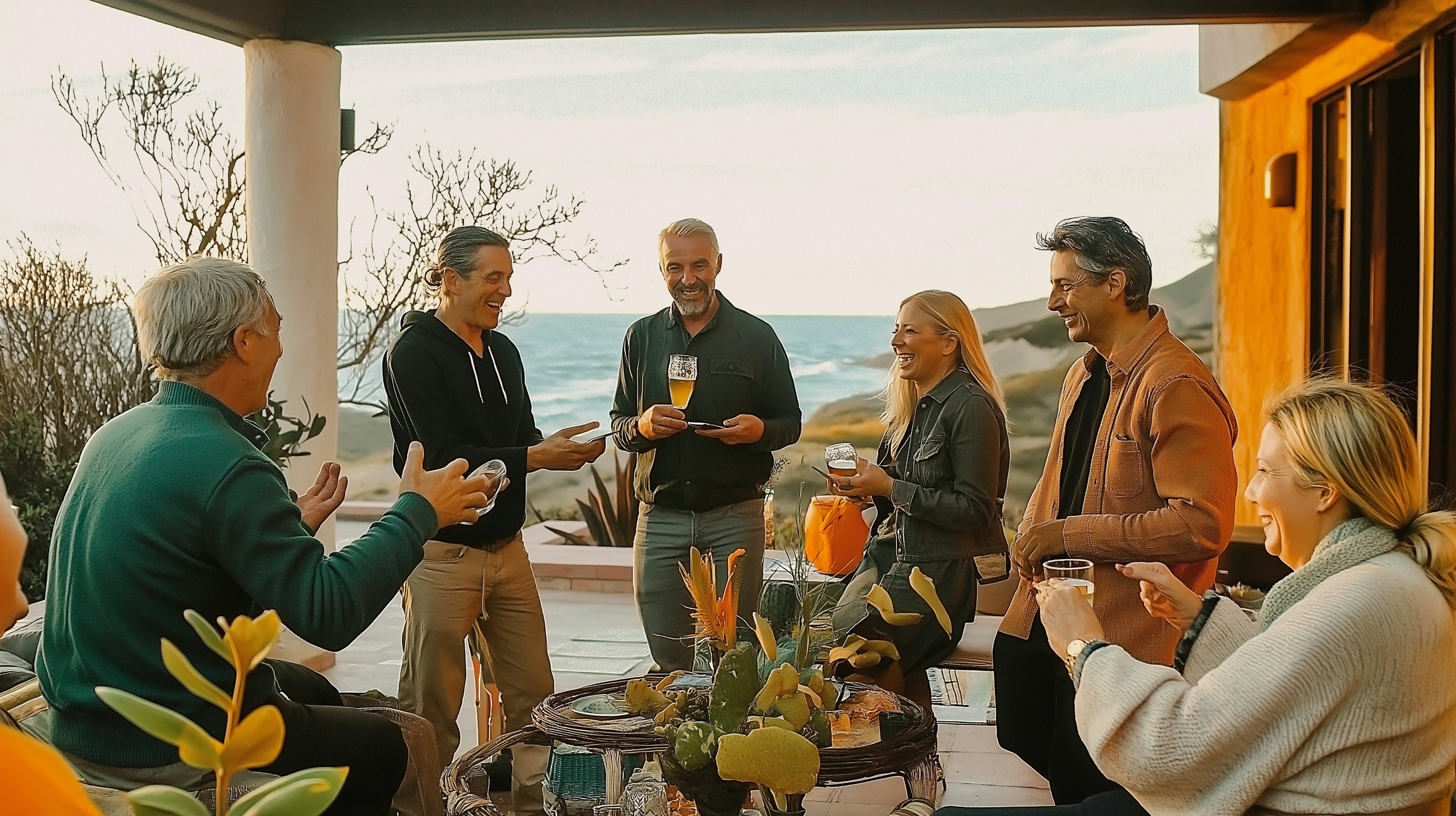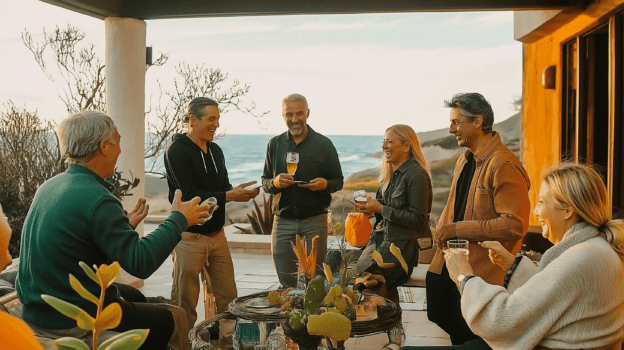Connection, Wellness & Meaningful Experiences in the Second Half of Life
The data is clear: we’re living longer lives. But we’re not necessarily living better ones. Despite modern conveniences, people—especially in midlife—feel more burned out, isolated, and disconnected than ever. The pressure to “figure it all out alone” has left many exhausted by independence and quietly craving something more human.
No more apps promising distraction. No more clutter that fills our homes but empties our souls.
What we need is more belonging. More humanity. More hope. And above all, more authentic connection.
That’s where community living comes in—not as a trend, but a return to something essential.
In the second half of life, our priorities shift. We crave depth over speed. Presence over performance. Genuine relationships over endless productivity. The old model of life behind walls no longer serves the future we want.
From Privacy to Purpose: Rethinking How We Want to Live
For decades, autonomy, privacy, and personal space were the dream. And for a time, that dream felt empowering. But now, even with success, freedom, and comfort, something deeper is missing.
One in three older adults reports feeling lonely on a regular basis. Burnout is rising. The U-curve of happiness—tracked across 132 countries—shows life satisfaction hits its lowest point between ages 47 and 55.
What’s missing isn’t success or stuff. It’s connection. Real, consistent, meaningful connection—the kind that happens across the dinner table, in shared rituals, in places where people show up for each other.
Humans weren’t designed to go it alone. Independence can be empowering. But isolation is not freedom.
What we need now is not more space.
It’s a more shared experience.
What Is Community Living?
Community living isn’t a dorm, a commune, or a retirement village. It’s a lifestyle designed for connection, wellness, creativity, and purpose in midlife and beyond.
It’s an ecosystem that blends:
- The comfort of home
- The energy of community
- The structure of wellness
- The freedom of exploration
- The depth of real-life growth
It’s dynamic and intentional—shaped by the people who live it, not just consumed by them.
Why does this make sense in the second half of life?
- You’re done performing: You’ve spent decades checking boxes. Now you want authenticity. Shared spaces invite you to show up as yourself—not who the world expects you to be.
- You value time more than things: You’re not chasing status anymore. You want meaningful moments, real conversations, and quality days.
- You’ve felt the weight of isolation: Divorce, relocation, or burnout often shrink social circles. Community living offers a remedy for that disconnection.
- You still want to grow: You’re curious, not coasting. You want to explore new ideas, develop new skills, and discover what’s next.
This isn’t about going backwards. It’s about moving forward—differently.
The Science Behind Belonging
Loneliness isn’t just uncomfortable—it’s dangerous.
Harvard’s 85-year-long Study of Adult Development found that social connection is the single biggest predictor of long-term happiness and health.
The U.S. Surgeon General has declared loneliness a public health crisis, linking it to higher risks of heart disease, dementia, and early death.
Community isn’t a luxury.
It’s a health intervention.
And it’s one we need more than ever.
No amount of square footage replaces real relationships. Real estate offers space, but not belonging. Zoom can’t replicate eye contact or shared laughter. And while purpose is personal, it rarely thrives in isolation. It needs proximity. Community. Connection.
Especially in the second half of life, what we crave is depth—not distance.
A New Way to Live. A Better Way to Grow.
Midlife doesn’t have to mark the beginning of the end. It can be the beginning of something entirely new. Not just about where you live—but how you live, and who you live alongside.
Because the future of a well-lived life?
It’s communal. Connected. And deeply human.




